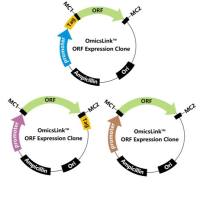Assessing A Aggregation State by Atomic Force Microscopy
互联网
301
There has been a growing recognition of a wide variety of diseases commonly referred to as conformational diseases, which share the feature of specific disease-related proteins adopting nonnative conformation that promote their ordered aggregation and deposition on surfaces. Due to the nanoscale dimensions and the varied morphology of such aggregates, atomic force microscopy (AFM) has emerged as an ideal tool for distinguishing structural features of the numerous potential aggregate forms, ranging from small globular oligomers to large mature amyloid fibrils. Beyond the ability to morphologically distinguish aggregate forms, AFM also can dynamically track the aggregation process due to its unique ability to be operated not only in air (ex situ), but also in solution (in situ). This feature provides for tracking the fate of individual aggregates over time. This chapter describes the use of AFM in characterizing the aggregation of the amyloid-β peptide (Aβ), which is hypothesized to play a key role in Alzheimer’s disease (AD), a late-onset neurodegenerative conformational disease.








